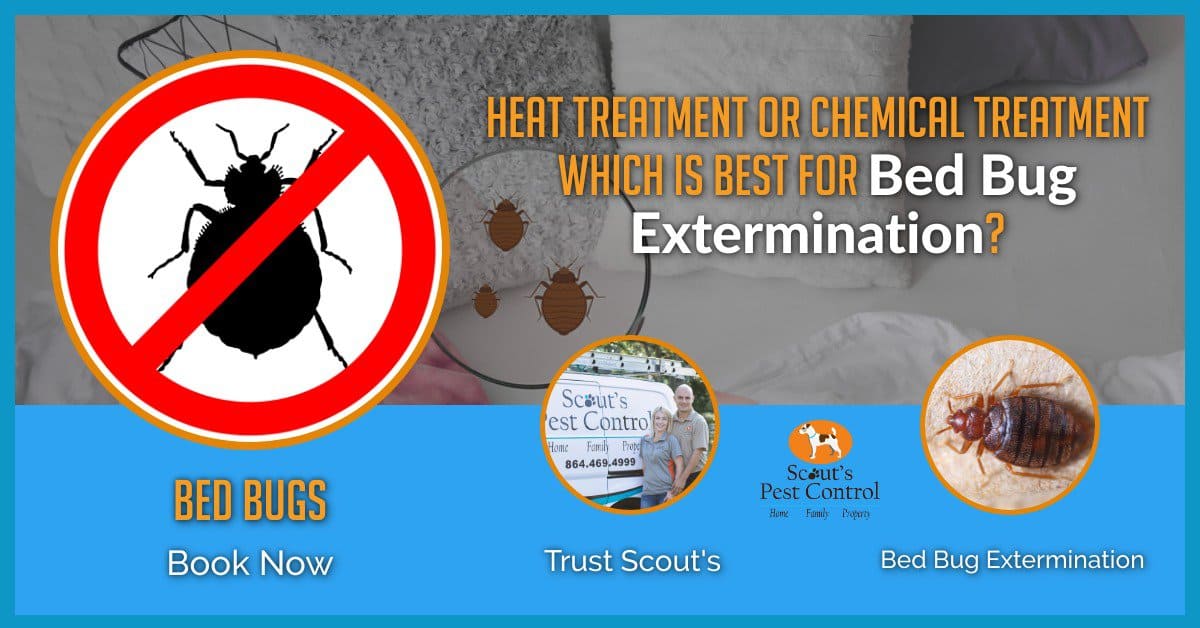Specialist Kings Bug Control Cincinnati: Your Trusted Exterminators
Specialist Kings Bug Control Cincinnati: Your Trusted Exterminators
Blog Article
Types of Parasite Control: Which Approach Is Right for Your Problem?
When faced with a parasite infestation, the option of a proper approach for insect control is critical in efficiently taking care of the situation. By checking out the numerous kinds of bug control approaches offered, individuals can make educated decisions customized to their special scenarios, ensuring an extra effective and sustainable result in bug elimination.
Chemical Pest Control
Chemical parasite control entails making use of synthetic or normally obtained chemicals to manage and eliminate pest populaces effectively. This approach is commonly used in farming, forestry, and household setups to battle a large range of bugs, consisting of rats, pests, and weeds. Using chemical pesticides can offer quick and targeted solutions to pest problems, making it a preferred choice for many people and organizations.
One of the crucial advantages of chemical pest control is its ability to promptly remove pests, lowering the danger of damage to plants, residential property, and human wellness. By utilizing certain chemicals that target specific bugs, this technique can efficiently regulate infestations while reducing injury to valuable organisms and the setting when applied correctly.
However, the usage of chemical insect control likewise increases problems concerning possible unfavorable results on non-target species, water resources, and human wellness. It is important to adhere to security guidelines, apply chemicals properly, and consider alternative bug control techniques to minimize these risks and guarantee sustainable bug management techniques.
Organic Parasite Control
Organic bug control, also referred to as biocontrol, makes use of living organisms to handle and lower bug populaces normally. This method utilizes the power of nature to manage parasites without the demand for synthetic chemicals. Biocontrol can involve the intro of all-natural opponents of the bug species, such as killers, bloodsuckers, or microorganisms, to subdue pest populations. By utilizing the parasite's all-natural killers or pathogens, organic insect control supplies a lasting and eco pleasant solution to pest monitoring.

Mechanical Pest Control
Using hands-on and physical techniques to handle parasite populations, mechanical insect control offers a different strategy that does not count on using living organisms or synthetic chemicals. This approach includes using obstacles, traps, or other devices to literally prevent or eliminate parasites. By obstructing parasite entrance factors or establishing up traps to catch them, mechanical parasite control can effectively minimize problems without introducing chemicals right into the environment.
One usual instance of mechanical insect control is making use of mesh displays on doors and windows to avoid insects from entering buildings. This easy yet efficient method acts as a physical obstacle, try here keeping bugs out while permitting for appropriate ventilation. Furthermore, devices like mousetraps, fly swatters, and ultrasonic repellents drop under the mechanical parasite control classification.
While mechanical bug control techniques can be labor-intensive and need routine monitoring and upkeep, they offer a ecologically pleasant and lasting service for taking care of parasite infestations. By incorporating different mechanical techniques, homeowner can produce a comprehensive pest control strategy that minimizes dependence on chemical pesticides.
Physical Pest Control

Some typical physical insect control techniques include making use of barriers such as screens or internet to stop parasite entrance, catches to record and get rid of insects, and hand-picking to physically get rid of bugs from plants or frameworks. Furthermore, techniques like warmth therapies can be utilized to control bugs like bed pests by increasing the temperature level to levels that are deadly to the pests.
Physical bug control is particularly beneficial in integrated bug monitoring (IPM) methods, where numerous insect control approaches are integrated for effective pest administration while minimizing using chemicals. By using physical parasite control methods, individuals can successfully attend to pest problems with very little environmental impact.
Integrated Pest Management
When implementing physical insect control methods as component of bug administration methods, Integrated Insect Management (IPM) emerges as a comprehensive technique that leverages various methods to efficiently manage pest populaces. IPM concentrates on long-lasting prevention of bugs with a combination of organic, cultural, physical, and chemical tools tailored to details pest issues. By incorporating several control tactics, IPM aims to minimize the dangers related to bugs while likewise decreasing dependence on chemical options.
One trick facet of IPM is the focus on surveillance and assessing pest populaces to identify the most appropriate control techniques. This positive technique allows residential rodent control for very early treatment and targeted approaches, causing much more effective pest administration. In addition, IPM promotes eco-friendly methods by focusing on non-chemical control techniques and only utilizing pesticides as a last resource.
Conclusion

By utilizing the insect's natural predators or virus, organic bug control provides a environmentally pleasant and sustainable service to pest management. - Kings pest control services Cincinnati oh
Using manual and physical approaches to handle insect populaces, mechanical bug control provides an alternative strategy that does not count on the use of living microorganisms or artificial chemicals.An Recommended Site efficient approach to taking care of insect populations without counting on chemical or biological approaches includes the use of physical bug control techniques.When implementing physical bug control methods as component of insect monitoring methods, Integrated Pest Monitoring (IPM) emerges as a thorough method that leverages numerous methods to properly manage pest populaces. Chemical insect control entails the use of chemicals, organic insect control makes use of natural killers, mechanical pest control includes physical obstacles, physical insect control consists of capturing or eliminating parasites, and integrated bug monitoring integrates numerous methods for an alternative strategy to pest control.
Report this page